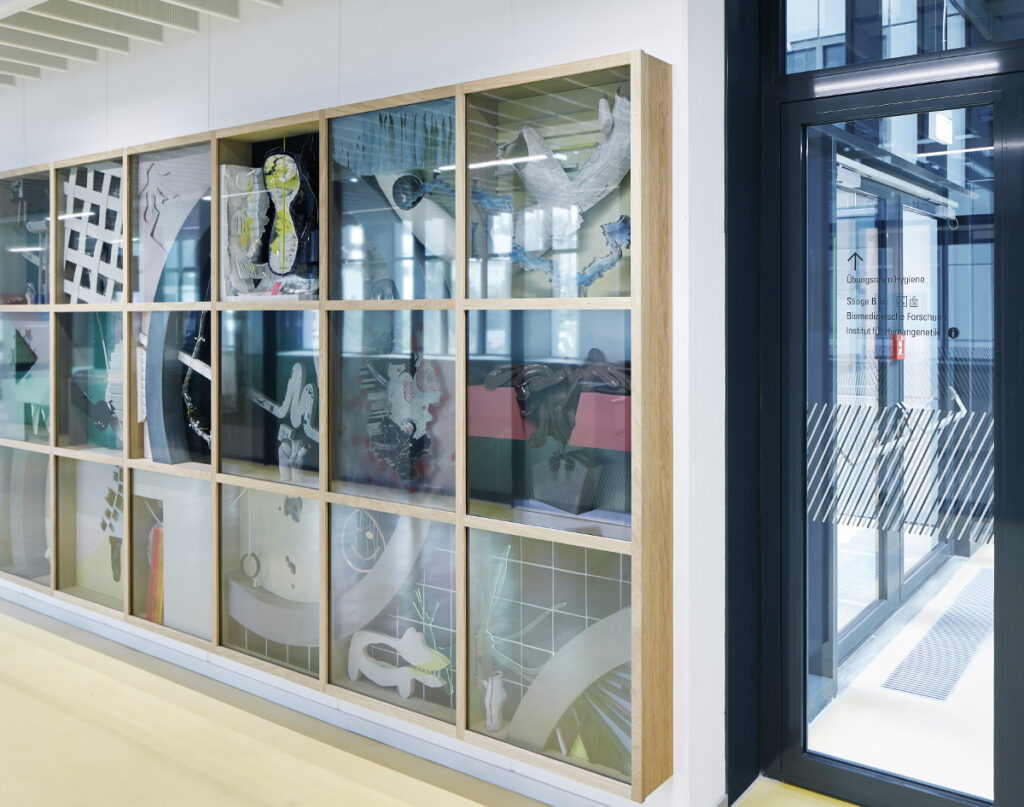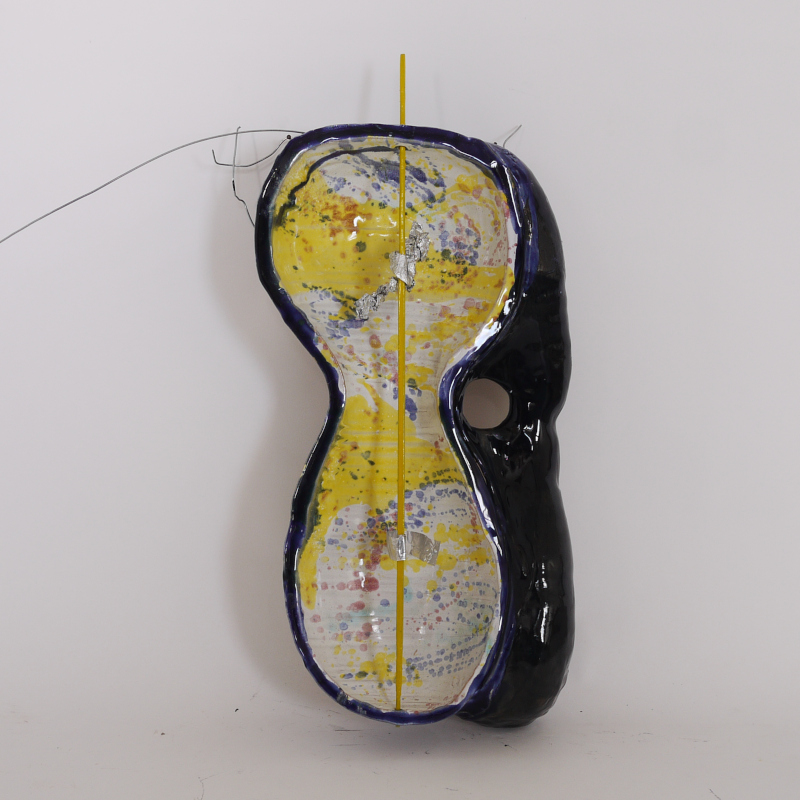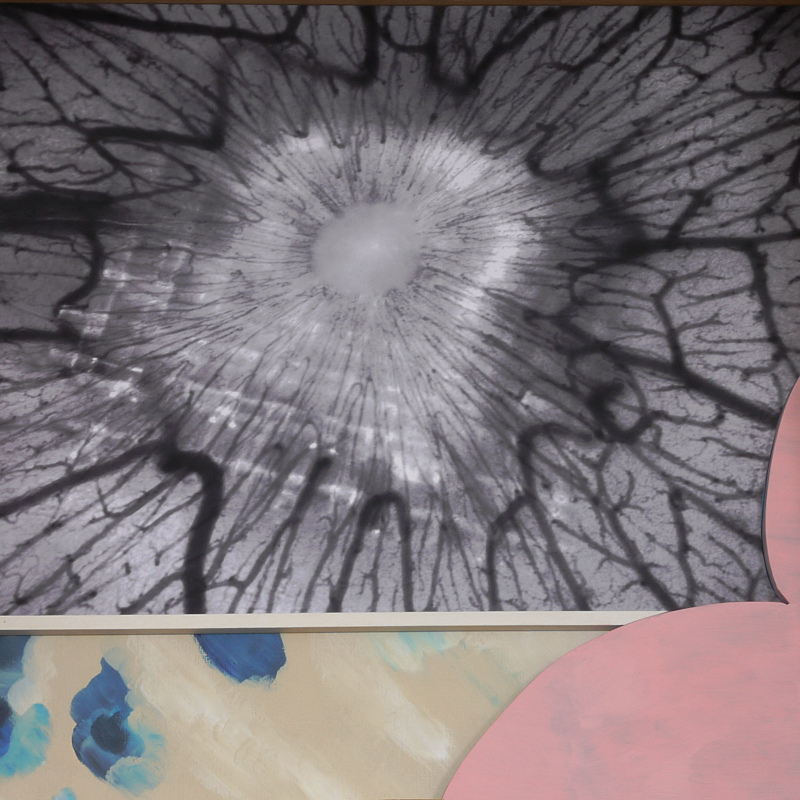
An einem Körper (On a Body) (Detail) / 2018 / wood (oak), glass, metal waxed or painted, var. woods painted or lacquered (acrylic, oil), wire, wax, aluminium, copper, enamel, pipes, plaster, ceramics burned and glaced, fabric, resin, mirror, metal sheet, leather, concrete, magnets, acrylic sheets, strings, 3Dprint, paper, papermaché, photography / 490 x 210 x 17 cm / MED CAMPUS Graz (perm.)
Misha Stroj’s contribution to the Med Campus is in a staircase that can be reached directly from the campus level. For this place, the artist has designed a plastic wall work that can be read as a kind of three dimensional image. The work is composed of 21 individual picture elements, which are assembled in an arrangement of seven times three units and thus give a kind of oversized relief. The units refer to the laboratories located in the Med Campus and thus refer to a specific event in the house. (…)
Thus, a contentwise and formally hybrid work has been created that equally involves sculptural, plastic and painterly aspects. With a wealth of details, it refers to a grand total narrative whose main narrative is a “laboratory of a different kind”. Misha Stroj’s approach is as exhaustive as it is elaborate. The structure is similar to the works of other artists in the Med Campus on the grid structure of the building, although the scale was not taken here 1: 1.
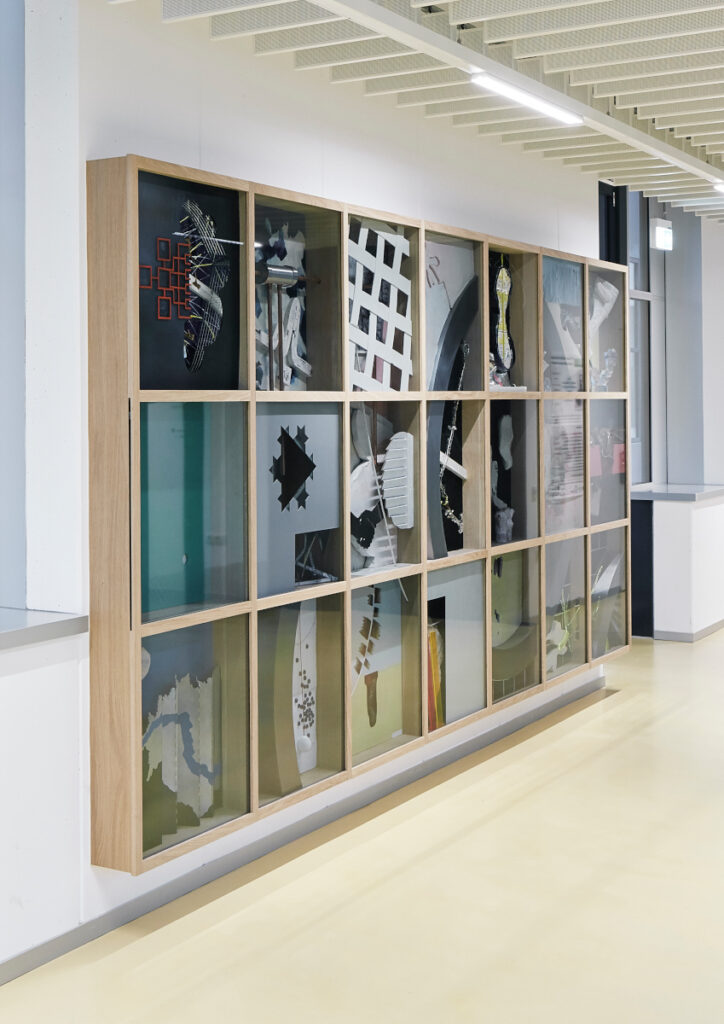
(…) Stroj began an extensive research and entered into correspondence with the individual laboratories to initiate a dialogue on the research fields that served as the basis for the development of the relief. This process, as an experimental arrangement for the approximation of science and art, is the basis of the pictorial representations in the individual wall fields. It is a necessarily abstract realization of abstract theoretical processes that are materialized in their visualization. Misha Stroj was interested in the reference field in the image of a hybrid body as the sum of the superimposition of concepts, images, methods, materials and forms. The result is a semantically rich relationship and meaning puzzle that leads into the depths of medical research, but also conveys a sense of artistic form finding. (…)
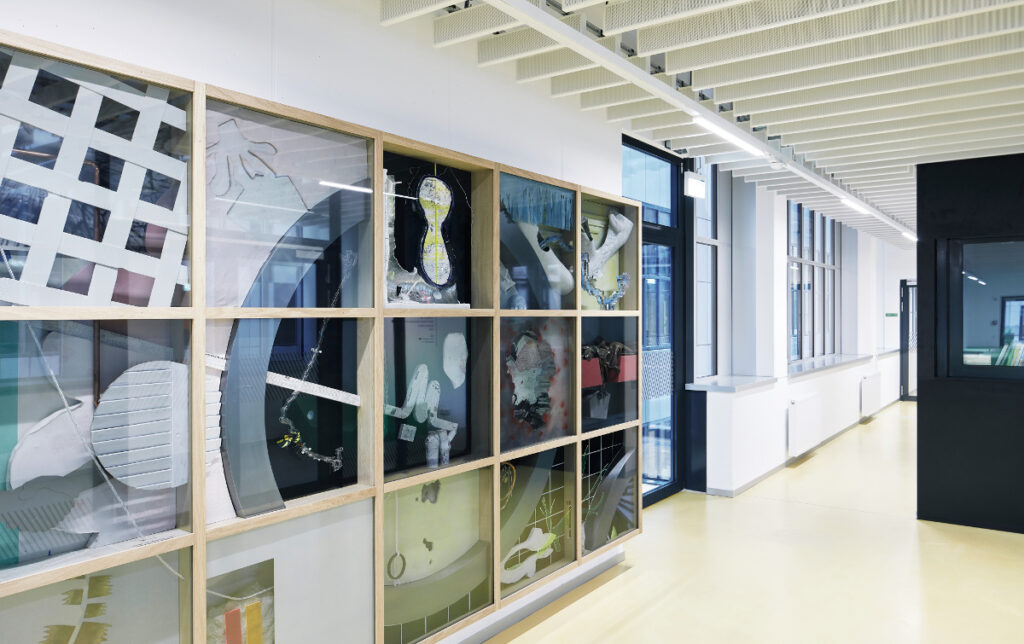
The 21 fields are dedicated to the various research topics in the campus, each of which acknowledges a moment as an artistic experimental arrangement, “as a fact”. It can only be indicated here cursorily, in which areas the research of the laboratories u.a. colonize: Artificial blood vessels cultured in a “bioreactor”, nutrient composition or pollution of the Danube, invention of a device for measuring the thickness of the body fat layer, findings of chronobiology, images of suspicious tissue parts analyzed by fractal geometry, investigation the nerve fibers of grasshoppers in the connection between the visual system and the brain. The diversity of research fields is also reflected in the artistic implementation process. Moments were sought in which the abstract field of the experiments can be summarized in terms of objectivity, and then translated back into a threedimensional structure.

(…) The result was an entanglement of artistic and scientific practice that defines the commonalities of the chosen methods hypothesis formation, rejection, implementation and replanning. (…)
Elements that are easy to decipher, such as the image of a cloud and a hippopotamus, alternate with abstract geometric shapes, such as a raster module, a fever curve, drawing elements such as arrows or signatures. This process, says Misha Stroj, is akin to moments of wonder and finding hidden connections. It remains with the observers to decode these elements again.
In the artistic realization and translation of these models, Misha Stroj himself approximated a scientific practice and set up pictorial hypotheses for the visualization of scientific processes. Again and again, templates were discarded, visualizations reinterpreted and other intrapicture contexts produced. (Natural) scientific and artistic research overlap in interconnected, multilayered processes.
(Patricia Grzonka, translation from German via A.I.)
